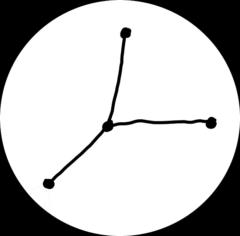
Write something
Office Hours with Scott Woody (CEO of Metronome)
Howdy pricing people! Hope your week is off to a great start. In two weeks, we're hosting a private event with Scott Woody, CEO of Metronome. Scott is one of my favorite thinkers on SaaS and AI pricing, and past Office Hours sessions have been jam-packed with insights. We're looking for a short list of leaders at Enterprise SaaS and AI companies to join the session to discuss: - Designing Pricing & GTM for AI - Building a Monetization Operating System - Open Floor: AI Pricing Challenges You're Facing We'll be keeping attendance to this one limited. If you'd like to attend, apply at the link below: https://luma.com/z6cw0f54 Otherwise, have a great week! If you're in the US, happy Thanksgiving 🦃 Rob
Pricing AI Chat for a High-Traffic E-commerce Site (1M+ Visitors)
We’re deploying an AI agent on a large e-commerce website with 1M+ monthly visitors, and expect around 5% to engage with the chat. The agent will handle support, product recommendations, cross-sell, and guided shopping. The backend runs on Voiceflow, and the client will be on our subscription, meaning we carry the credit usage cost — which is the core pricing challenge. We’re trying to structure a model that: - Keeps us safely profitable - Protects us from usage spikes - Feels predictable for the client - Optionally includes a success fee (% of revenue generated through the chat) Current ideas: - One-time setup fee - Monthly base fee - Usage-based tiers or cost pass-through - Small performance % on AI-driven conversions Would love to hear how you’d structure this and what’s worked for you in high-volume deployments.
Pokemon Pricing - let me know how you do it?
Okay, so the Pokemon catchphrase 'Gotta catch 'em all' sums up this problem: Some pricing models inhibit the natural expansion volume of the customers - e.g.: - We sell factory locations, but customers start with 1 factory and grow slowly from there. - We sell 10 users... but every customer have 100+ potential users. - We price per patient... but only get to handle patients of type A, not types B and C. The simple example-fix is to price per number of employees (a volume outside the control of the customer) instead of per user (a volume controlled and reduced by the customer)... but what other ways have you guys used to solve the share-of-wallet problem? Asking for a friend 😉
Looking for a Boutique Consultant to Pressure Test a Monetization Strategy - Any Recs?
Hey all! I’m looking for a small/boutique SaaS pricing consultant who can serve as an external ear on a monetization strategy I’m finalizing for FY26. This isn’t a “teach us pricing” project. The tactical stuff (user testing, billing experiments, packaging variants) is already underway. What I need is someone who can help stress-test the big picture and sanity-check the architecture. Specifically looking for help with: 1. Coherence check: does the strategy work as a system? 2. Blind spots: assumptions, hidden risks, unintended effects. 3. Pattern benchmarking: how our model maps to modern PLG + AI monetization patterns. 4. Narrative review - does it scale cleanly to C-level/board and down to PMs? 5. Sequencing risks - where rollout timing could break. 6. Edge-case audit - usage/plan boundaries, adoption cliffs, etc. If you know someone who fits this profile, or you’ve worked with a boutique firm that leans strategic (not just packaging projects), I’d love recommendations. Thank you!
Pricing for Membership (B2B on-line training)
Hi all. I have a question about "pricing" that is not related to SaaS, but rather to transforming Professional Services into ARR. Two years ago we started an initial experiment: delivering live online training to IT professionals working in SMEs, using a membership-based approach. Our value proposition: - 8 courses scheduled throughout the year - Two yearly membership options for the customer: - 1) Membership for 1 participant: X€ - 2) Membership for up to 3 participants: 1.6 × X€ (It worked. And we were so happy that we (I) made the BIG mistake: not considering at all - for the second year - the physiological Churn Rate..) For next year, we want to apply the same business model to end-user training (Office M365 Apps). OUR PRODUCT: 8 courses scheduled in advance for all of 2026 OUR TARGET: small/micro companies (2 to 10 potential users) OUR COST STRUCTURE: main costs are fixed (trainer, organization), so the number of people per company in each class is not an issue. PRICING IDEA: offer customers a flat yearly price, divided into tiers that help maintain profitability. We are considering pricing per Company, based on the total number of attendees per course. For example: - 1–2 attendees - 2–5 attendees - 5–10 attendees - I would appreciate any suggestion on how to keep the pricing simple and fair for both sides I have already interviewed about 5 customers who are interested in the concept, but I have not shared any pricing with them yet. Do you thing that pricing per tier is the best options or do you think we have to think in a different way? Thanks in advance to all. Claudio
1-30 of 123

skool.com/pricingsaas
The first stop for SaaS pricing and packaging.
Powered by








